- Top Annual Flowers for Your Garden
- Petunias
- Marigolds
- Zinnias
- Impatiens
- Geraniums
- Cosmos
- Salvia
- Verbena
- Ageratum
- Sunflowers
- Marigolds: A Burst of Color
- Types of Marigolds
- Growing Marigolds
- Benefits of Marigolds
- Petunias: Vibrant and Easy to Grow
- Introduction
- Types of Petunias
- How to Grow Petunias
- Companion Planting
- Troubleshooting
- Conclusion
- Cosmos: Beautiful Blooms for Summer
- Growing Cosmos
- Cosmos Varieties
- Caring for Cosmos
- Using Cosmos in the Garden
- In Conclusion
- Zinnias: Long-Lasting and Diverse
- Types of Zinnias
- Growing Zinnias
- Colors and Varieties
- Attracting Pollinators
- Sunflowers: A Standout in the Garden
- Varieties
- Planting and Care
- Attracting Pollinators
- In Conclusion
- Pansies: Delicate Beauty for the Cooler Seasons
- Impatiens: Brightening Up Shaded Areas
- Alyssum: Fragrant and Charming Ground Cover
- Fragrance
- Charming Blooms
- Easy to Grow
- Uses in the Garden
- Care and Maintenance
- Summary
- Questions and Answers:
- What are some annual flowers that bloom all year?
- Can you recommend any annual flowers that are good for beginners?
- Are there any annual flowers that can withstand hot and dry conditions?
- What are some annual flowers that have a strong fragrance?
- Can you suggest any annual flowers that attract butterflies and bees?
- Are there any annual flowers that are resistant to pests and diseases?
- Videos: 7 Best Annual Flowers and Plants to Bring the ‘Wow’ Factor ✨
One of the joys of gardening is being able to enjoy the beauty and fragrance of flowers all year round. Annual flowers are a popular choice for adding color and vibrancy to any garden. Unlike perennial flowers, which only bloom for a short period each year, annuals provide a constant display of beautiful blooms.
When choosing annual flowers for your garden, it’s important to consider factors such as sunlight, soil conditions, and climate. Some annual flowers thrive in full sun, while others prefer partial shade. Similarly, certain flowers prefer well-drained soil, while others can tolerate more moisture.
In this article, we will explore some of the top annual flowers that can provide beautiful blooms all year long. From vibrant marigolds to delicate petunias, there is a wide variety of annual flowers to suit every gardener’s preferences. Whether you’re looking to fill a window box or create a stunning flowerbed, these annual flowers are sure to add color and beauty to your garden.
“Annual flowers are a great way to add splashes of color to your garden throughout the year. Their diverse range of colors, shapes, and sizes can create stunning visual displays.”
So, without further ado, let’s explore some of the top annual flowers to consider for your garden.
Top Annual Flowers for Your Garden
Annual flowers are a great way to add color and beauty to your garden all year long. Whether you’re looking to fill your garden with vibrant blooms or add some height and texture, there are plenty of options to choose from. Here are some of the top annual flowers to consider for your garden:
Petunias
Petunias are an incredibly popular annual flower that come in a wide variety of colors. They are great for hanging baskets, containers, or as bedding plants. Petunias are known for their trumpet-shaped flowers that bloom throughout the summer and fall.
Marigolds
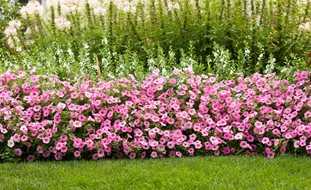
Marigolds are another popular choice for annual flowers. They come in shades of yellow and orange, and their bright blooms can add a pop of color to any garden. Marigolds are also relatively easy to grow and can attract beneficial insects to your garden.
Zinnias
Zinnias are a colorful and versatile annual flower. They come in a wide range of colors and can grow to be quite tall, making them a great choice for adding height to your garden. Zinnias are also easy to grow from seeds, making them a popular choice for novice gardeners.
Impatiens
Impatiens are a shade-loving annual that can add bursts of color to areas of your garden that don’t receive much sun. They come in many different colors and can be planted in containers or as bedding plants. Impatiens are also relatively low-maintenance and can tolerate heat and humidity.
Geraniums
Geraniums are a classic annual flower that are known for their large, showy blooms. They come in a variety of colors and can be grown in containers or as bedding plants. Geraniums are also relatively low-maintenance and can tolerate heat and drought.
Cosmos
Cosmos are a dainty annual flower with delicate, feathery foliage and colorful flowers that come in shades of pink, white, and purple. They are easy to grow and can attract butterflies and hummingbirds to your garden. Cosmos also make great cut flowers for bouquets.
Salvia
Salvia is a versatile annual flower that comes in many different varieties and colors. They are known for their tall spikes of flowers and aromatic foliage. Salvia plants can attract bees and butterflies to your garden, and they are also drought-tolerant and low-maintenance.
Verbena
Verbena is a trailing annual flower that is perfect for hanging baskets and containers. They come in a variety of colors and can add a cascading effect to your garden. Verbena plants are also drought-tolerant and can attract butterflies to your garden.
Ageratum
Ageratum is a compact annual flower that is perfect for borders and edging. They come in shades of blue, purple, and pink, and their small, fluffy blooms can add a touch of whimsy to your garden. Ageratum plants are also low-maintenance and can tolerate heat and humidity.
Sunflowers
Sunflowers are a classic annual flower that are known for their tall stalks and large, vibrant blooms. They come in a variety of colors and can attract birds and butterflies to your garden. Sunflowers are also relatively easy to grow and can make a stunning focal point in any garden.
These are just a few of the top annual flowers to consider for your garden. Whether you’re looking for bold color, fragrant blooms, or plants that attract pollinators, there is an annual flower out there that is perfect for you. Happy gardening!
Marigolds: A Burst of Color
Marigolds are one of the most popular annual flowers that can bring a burst of color to your garden all year. With their vibrant blooms and rich fragrance, marigolds are a favorite choice for many gardeners.
Types of Marigolds
There are several different types of marigolds that you can choose from for your garden. Here are a few popular ones:
- African Marigolds: These marigolds have large, showy flowers in shades of yellow, orange, and red. They can grow up to 3 feet tall and are great for adding height to your garden.
- French Marigolds: French marigolds are smaller in size compared to African marigolds, but they are equally beautiful. They come in various colors like yellow, orange, and red, and their blooms are often bi-colored.
- Signet Marigolds: Signet marigolds are known for their dainty, finely divided foliage and small, edible flowers. They have a citrusy scent and can be used as a decorative addition to salads or desserts.
Growing Marigolds
Marigolds are relatively easy to grow and care for, making them a perfect choice for beginners. Here are some tips for growing marigolds in your garden:
- Choose a sunny spot in your garden with well-draining soil.
- Start the seeds indoors about 4-6 weeks before the last frost date or sow them directly into the garden after the danger of frost has passed.
- Water the plants regularly, but avoid over-watering as it can lead to root rot.
- Deadhead the faded flowers to encourage more blooms.
- Fertilize the plants every month with a balanced fertilizer to promote healthy growth.
Benefits of Marigolds
Aside from their beauty, marigolds offer several benefits to your garden:
- Repel pests: Marigolds have a natural insect-repellent property that can help keep pests like aphids, mosquitoes, and nematodes away from your garden.
- Attract beneficial insects: Marigolds attract pollinators like bees and butterflies, which are essential for the pollination of other plants in your garden.
- Increase soil fertility: Marigolds have a mechanism called allelopathy, where they release chemicals that can suppress the growth of weeds and improve the fertility of the soil.
- Add color and beauty: With their vibrant blooms, marigolds can add a pop of color and beauty to any garden or landscape.
With their wide variety of colors, easy care, and numerous benefits, marigolds are a must-have for any garden. Plant some marigolds in your garden, and enjoy their beautiful blooms and fragrance all year round!
Petunias: Vibrant and Easy to Grow
Introduction
Petunias are popular annual flowers that are known for their vibrant blooms and ease of growth. These versatile flowers come in a wide variety of colors and are a great addition to any garden or landscape. Whether you’re a beginner gardener or an experienced one, petunias are a fantastic choice.
Types of Petunias
There are several different types of petunias to choose from, each with its own unique characteristics. Some common types include:
- Grandiflora petunias: These petunias have large, showy flowers and are known for their ruffled edges.
- Multiflora petunias: These petunias produce smaller flowers, but they bloom prolifically throughout the growing season.
- Milliflora petunias: These petunias have small flowers and compact growth habits, making them ideal for containers and hanging baskets.
How to Grow Petunias
Growing petunias is relatively easy, even for beginners. Here are some basic steps to get you started:
- Choose a sunny location: Petunias thrive in full sun, so pick a spot in your garden that receives at least 6 hours of direct sunlight each day.
- Prepare the soil: Petunias prefer well-draining soil, so amend your garden bed with compost or peat moss to improve drainage.
- Sow the seeds or plant seedlings: If starting petunias from seeds, sow them indoors 8-10 weeks before the last frost date. Transplant seedlings outdoors after all danger of frost has passed. If using seedlings, simply plant them in the prepared garden bed.
- Water regularly: Petunias like evenly moist soil, so water them regularly to keep the soil moist but not waterlogged.
- Fertilize as needed: Petunias are heavy feeders and benefit from regular fertilization. Use a balanced fertilizer according to the package instructions.
- Deadhead spent flowers: To encourage continuous blooming, remove faded flowers regularly.
Companion Planting
Petunias are great companion plants as they attract pollinators like butterflies and bees, which help to increase the overall biodiversity in your garden. They also work well when planted with other annuals or perennials that have similar sun and water requirements.
Troubleshooting
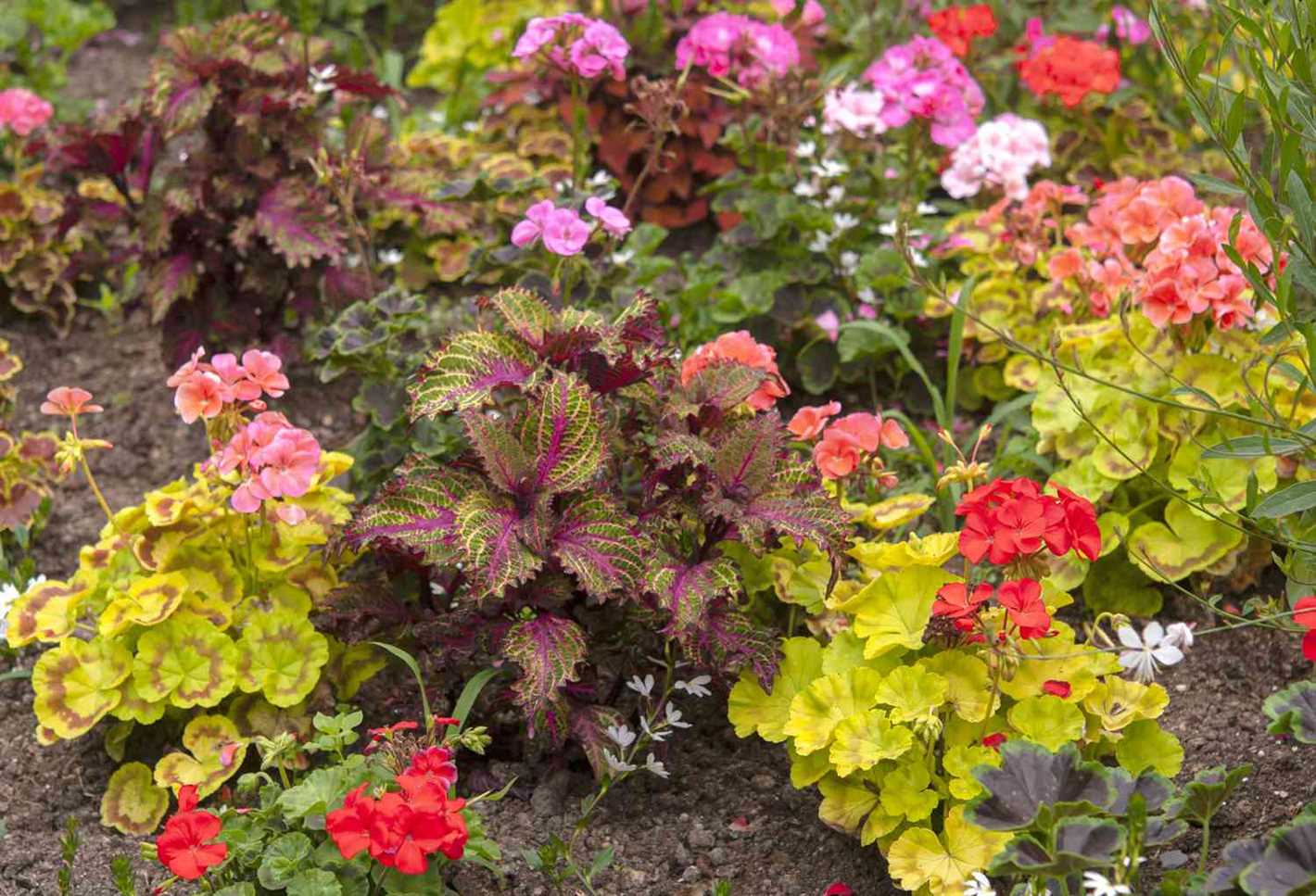
While petunias are generally easy to grow, they can face some common problems. Here are a few troubleshooting tips:
- Fungal diseases: Petunias are susceptible to fungal diseases like powdery mildew and botrytis blight. To prevent these diseases, avoid overhead watering, provide adequate air circulation, and remove any infected plant material.
- Pests: Common pests that may affect petunias include aphids, spider mites, and whiteflies. Regularly inspect your plants for signs of pests and take appropriate action if necessary, such as using insecticidal soap or natural predators.
- Watering issues: Overwatering can lead to root rot, while underwatering can cause wilting and stunted growth. Make sure to water your petunias appropriately, keeping the soil evenly moist.
Conclusion
Petunias are a fantastic choice for any garden, offering vibrant blooms and easy growth. With their wide range of colors and varieties, there’s a petunia for every gardener’s preference. By following some basic care guidelines, you can enjoy beautiful petunias in your garden all year round.
Cosmos: Beautiful Blooms for Summer
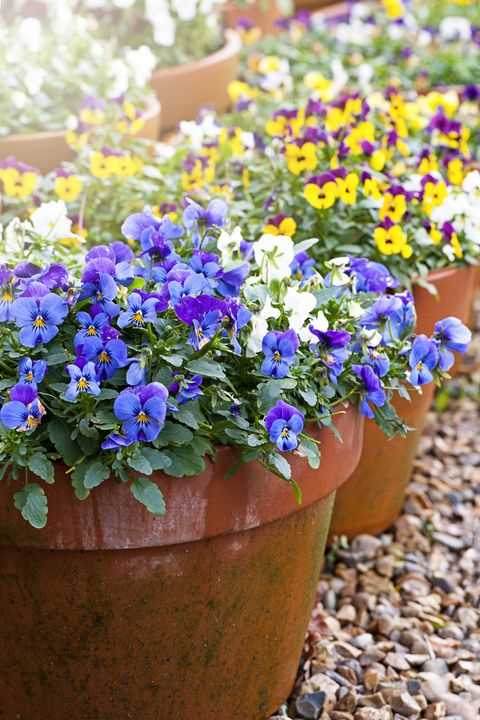
If you’re looking to add a splash of color to your summer garden, cosmos is the perfect choice. These beautiful flowers are known for their vibrant colors and delicate blooms. Cosmos come in a variety of hues, including pink, purple, orange, and white, making them a versatile choice for any garden or landscape.
Growing Cosmos
Cosmos are easy to grow from seeds, making them a popular choice for gardeners of all skill levels. They thrive in full sun and require well-draining soil. To start growing cosmos, simply sow the seeds directly into the ground after the last frost has passed. Make sure to space the seeds about 12 inches apart to allow for proper growth.
Once the seeds have been planted, water them regularly to keep the soil moist. Cosmos are relatively drought-tolerant, but they will benefit from consistent watering, especially during dry spells. As the plants begin to grow, you may need to provide support, such as stakes or cages, to prevent them from flopping over.
Cosmos Varieties
There are several varieties of cosmos to choose from, each with its own unique qualities. Here are a few popular types:
- Cosmos bipinnatus: This variety is the most common and comes in a wide range of colors. It has fern-like leaves and daisy-like flowers.
- Cosmos sulphureus: Known for its bright orange and yellow blooms, this variety adds a bold pop of color to any garden.
- Cosmos atrosanguineus: Also known as the chocolate cosmos, this variety has deep red flowers with a chocolate scent.
Caring for Cosmos
Once your cosmos plants are established, they require minimal care. Deadheading the flowers regularly will encourage more blooms to form. You can also stake taller varieties to keep them upright and prevent them from flopping over. Cosmos are relatively pest and disease resistant, but they may attract butterflies and birds, which can be a delightful addition to your garden.
Using Cosmos in the Garden
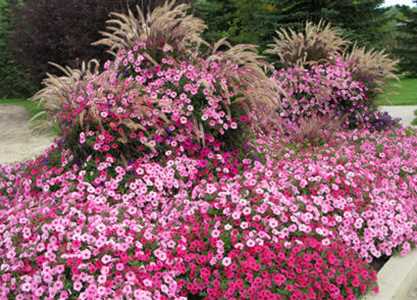
Cosmos are excellent additions to flower beds, borders, and containers. Their tall and airy stems add a touch of elegance, while their vibrant blooms brighten up any space. They also make great cut flowers and can be used in bouquets or arrangements. Consider planting cosmos alongside other summer-blooming flowers, such as zinnias, sunflowers, or marigolds, for a stunning display of color.
In Conclusion
Cosmos are beautiful annual flowers that are easy to grow and provide stunning blooms all summer long. Whether you’re a beginner or an experienced gardener, cosmos are a great choice for adding color and beauty to your outdoor space. So go ahead and plant some cosmos in your garden this summer and enjoy their vibrant, delicate blooms!
Zinnias: Long-Lasting and Diverse
Zinnias are a popular choice for annual flower gardens due to their vibrant and long-lasting blooms. These flowers come in a wide range of colors and sizes, making them a versatile addition to any garden.
Types of Zinnias
There are three main types of zinnias: dwarf, medium, and tall. Dwarf zinnias grow to be about 6-12 inches tall and are perfect for borders or containers. Medium zinnias can grow up to 2 feet tall and are often used in flower beds or cutting gardens. Tall zinnias can reach heights of 3-4 feet and are great for adding height and drama to a garden.
Growing Zinnias
Zinnias are easy to grow from seed and can be sown directly in the garden after the threat of frost has passed. They prefer full sun and well-draining soil. Regular watering and deadheading will help promote continuous blooming throughout the season.
Colors and Varieties
Zinnias come in a wide range of colors, including red, orange, yellow, pink, purple, and white. Some varieties even have two-tone or multicolored petals. Popular varieties include ‘Benary’s Giant’, ‘State Fair’, and ‘Profusion’ series.
Attracting Pollinators
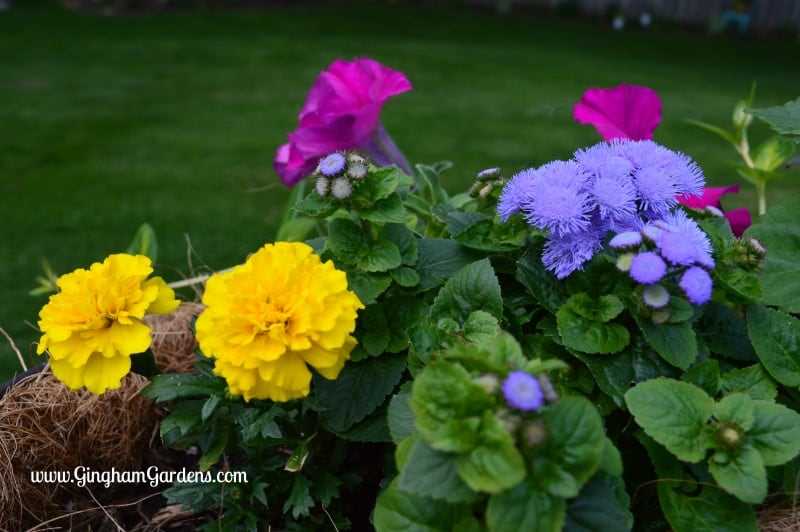
Zinnias are a favorite of butterflies and bees, making them a great choice for pollinator-friendly gardens. The vibrant flowers also make beautiful cut arrangements, bringing a splash of color indoors.
In conclusion, zinnias are a versatile and long-lasting annual flower that can add vibrant color to any garden. With their wide range of colors and sizes, easy growing requirements, and attractiveness to pollinators, zinnias are a must-have for gardeners looking to create beautiful blooms all year.
Sunflowers: A Standout in the Garden
When it comes to brightening up your garden, sunflowers are a standout choice. With their tall stems, large vibrant blooms, and iconic sun-like appearance, sunflowers are sure to grab the attention of any passerby. Whether you’re a seasoned gardener or just starting out, sunflowers are a great addition to any garden.
Varieties
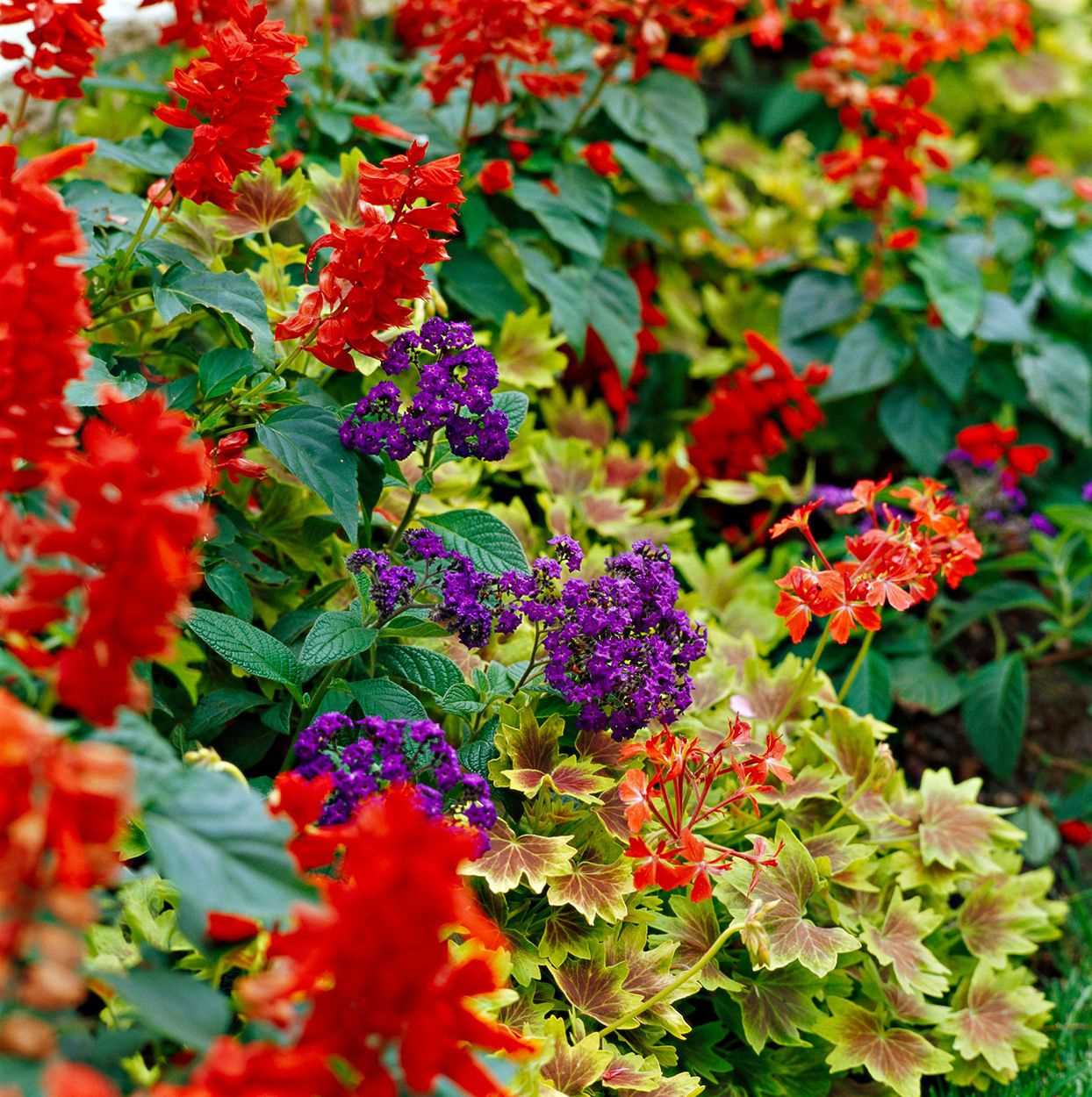
Sunflowers come in a variety of sizes and colors, allowing you to choose the perfect fit for your garden. Some popular varieties include:
- Teddy Bear Sunflower: This variety has small, fluffy blooms that resemble teddy bear faces.
- Giant Sunflower: As the name suggests, this variety produces massive blooms that can reach up to 12 inches in diameter.
- Red Sunflower: For something a little more unique, consider planting red sunflowers. Their deep, rich color adds a dramatic touch to any garden.
Planting and Care
Sunflowers are relatively easy to grow, making them a great choice for beginner gardeners. Here are a few tips to help you get started:
- Choose the right location: Sunflowers thrive in full sun, so be sure to select a spot in your garden that receives at least 6 hours of direct sunlight per day.
- Prepare the soil: Sunflowers prefer well-draining soil, so amend your soil with compost or organic matter before planting.
- Plant the seeds: Plant sunflower seeds directly into the soil after the last frost date in your area. Space the seeds about 6 inches apart and cover them with about 1 inch of soil.
- Water regularly: Keep the soil evenly moist but not overly saturated. Water at the base of the plants to avoid wetting the leaves, which can lead to diseases.
- Support the stems: As sunflowers grow, their tall stems can become top-heavy. Use stakes or a trellis to provide support and prevent them from toppling over.
Attracting Pollinators
Sunflowers are not only visually stunning, but they also attract beneficial pollinators to your garden. Bees and butterflies are particularly fond of sunflower blooms, making them a great addition to any pollinator garden. By planting sunflowers, you’re not only adding beauty to your garden but also providing a valuable food source for these important creatures.
In Conclusion
If you’re looking for a garden standout that is easy to grow and a favorite of pollinators, sunflowers are the perfect choice. With their sunny disposition and stunning blooms, they are sure to make your garden a vibrant and welcoming space.
Pansies: Delicate Beauty for the Cooler Seasons
Pansies are a popular choice for gardeners looking to add a touch of delicate beauty to their landscapes during the cooler seasons. These charming flowers are known for their vibrant colors and unique shape, making them a standout choice for any garden.
Growing Pansies
Pansies are relatively easy to grow and thrive in cooler temperatures, making them a perfect choice for early spring and fall plantings. They prefer well-drained soil and should be watered regularly to keep the soil moist but not soggy. Pansies also appreciate a location with partial shade, especially during hot summer months.
Care and Maintenance
While pansies are generally low-maintenance, there are a few key care tips to keep in mind. Deadheading, or removing faded flowers, will encourage the growth of new blooms and help prolong the flowering period. Additionally, regular fertilization with a balanced flower food will help keep pansies healthy and vibrant.
Popular Varieties
There are numerous pansy varieties to choose from, each offering its own unique colors and patterns. Some popular choices include:
- Delta Series: These pansies are known for their ruffled petals and come in a wide range of colors, including shades of purple, yellow, and orange.
- Clear Crystals: These pansies have clear, solid colors and are perfect for creating a bold, eye-catching display in the garden.
- Waterfall Series: These cascading pansies are perfect for hanging baskets or containers and feature a range of pastel colors.
Uses in the Garden
Pansies can be used in a variety of ways in the garden. They make a beautiful addition to borders and flower beds, adding color and interest throughout the cooler seasons. Pansies also work well in containers and hanging baskets, adding a pop of color to patios and decks. Additionally, their delicate blooms can be used in floral arrangements, bringing a touch of natural beauty indoors.
In Conclusion
Pansies are a versatile and beautiful choice for gardeners looking to add color and interest to their landscapes during the cooler seasons. With their wide range of colors and unique shape, these delicate flowers are sure to bring a touch of beauty to any garden.
Impatiens: Brightening Up Shaded Areas
When it comes to adding color to shaded areas of your garden, impatiens are an excellent choice. These popular annual flowers are known for their vibrant blooms and ability to thrive in areas with limited direct sunlight.
Characteristics and Types
Impatiens, also known as touch-me-nots, are a genus of flowering plants with over 1,000 known species. They are native to the tropics and can be found growing in shady locations under trees and in forested areas. Impatiens flowers come in a wide range of colors, including shades of pink, red, purple, orange, and white.
The three most common types of impatiens you’ll find in nurseries and garden centers are:
- New Guinea impatiens: These impatiens have larger flowers and can tolerate more sunlight than other types. They are available in a variety of colors and are known for their long-lasting blooms.
- Double impatiens: Double impatiens have double layers of petals, giving them a fuller appearance. They are available in various colors and are great for adding a touch of elegance to shaded areas.
- Standard impatiens: Also known as bedding impatiens, these varieties are the most common type and are usually grown as annuals. They have a compact growth habit and produce masses of small, single flowers.
Growing Tips
Impatiens are relatively easy to grow and care for, making them a popular choice for both beginner and experienced gardeners. Here are some tips to help you get the best results with your impatiens:
- Choose a shaded or partially shaded spot in your garden. Impatiens thrive in areas with filtered or indirect sunlight.
- Provide well-draining soil that is rich in organic matter. Impatiens prefer moist soil but are susceptible to root rot if the soil becomes waterlogged.
- Water your impatiens regularly to keep the soil evenly moist. Avoid overhead watering, as this can promote the spread of diseases.
- Apply a balanced fertilizer every few weeks during the growing season to promote healthy growth and abundant blooms.
- Deadhead spent flowers regularly to encourage continuous blooming.
- Monitor for common pests, such as aphids and spider mites, and take appropriate measures to control them.
Uses in the Garden
Impatiens are versatile flowers that can be used in various ways to brighten up shaded areas of your garden. Here are some ideas:
- Plant them in flower beds or borders to create colorful displays.
- Use them in hanging baskets or container gardens for a burst of color.
- Combine them with other shade-loving plants, such as ferns and hostas, for a lush and vibrant look.
- Grow them as groundcovers to add texture and color to shady areas.
- Add them to window boxes or planters to create a cheerful display.
Conclusion
Impatiens are a perfect choice for adding color to shaded areas of your garden. With their bright blooms and ability to thrive in low-light conditions, they are sure to bring a smile to your face. Whether planted in beds, containers, or hanging baskets, these beautiful flowers are a must-have for any garden lover.
Alyssum: Fragrant and Charming Ground Cover
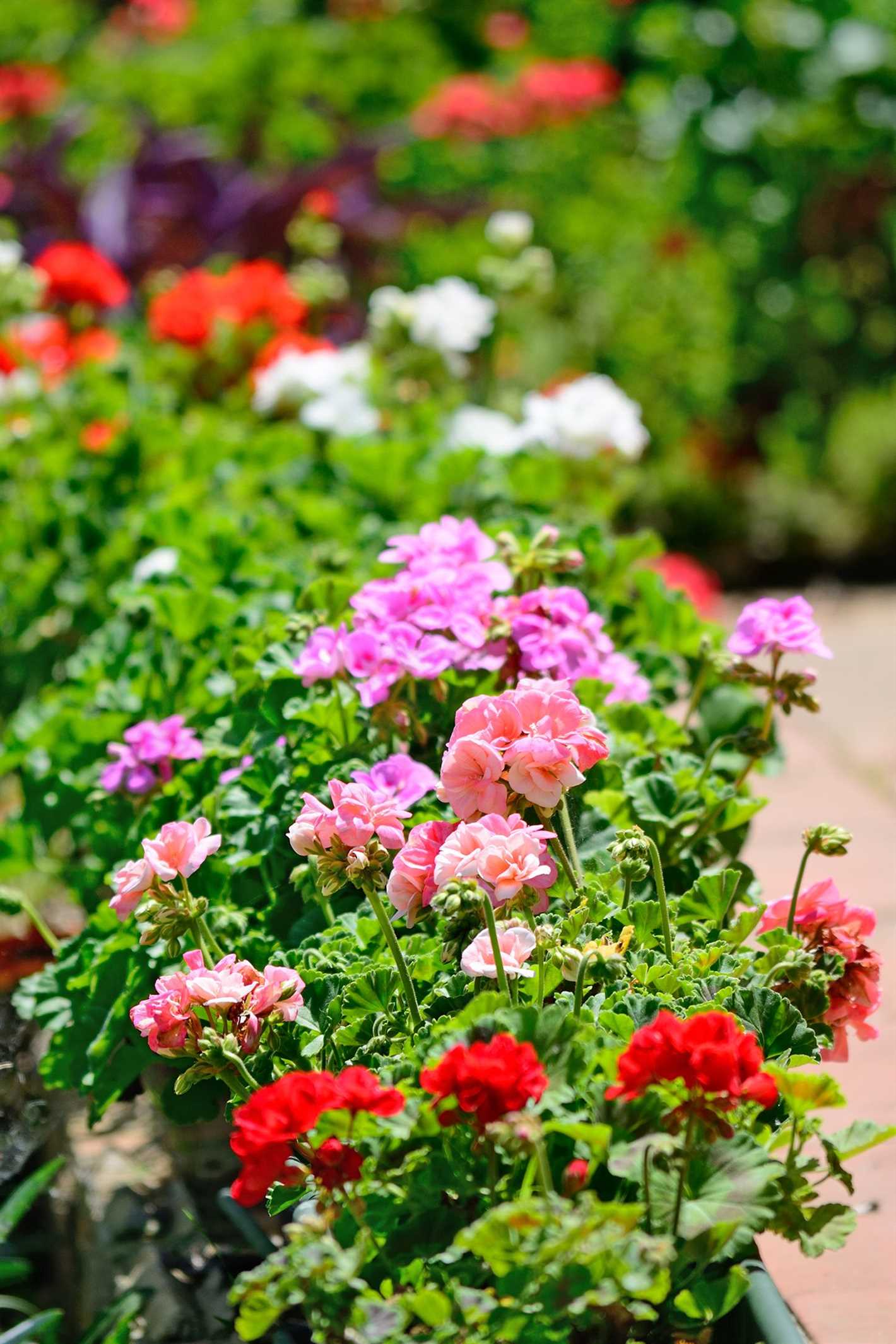
Alyssum is a popular annual flower that is known for its fragrance and charm. This small flowering plant is a perfect choice for ground cover in your garden, adding beauty and color to any landscape.
Fragrance
One of the most distinctive features of alyssum is its sweet and delicate fragrance. The flowers emit a pleasant scent that can fill the air, making it a favorite among gardeners and visitors. The fragrance of alyssum is often compared to honey or vanilla, creating a soothing and relaxing atmosphere in your garden.
Charming Blooms
Alyssum blooms in clusters of small, dainty flowers that come in a variety of colors. The most common color is white, but you can also find alyssum in shades of pink, purple, and yellow. The flowers are small and delicate, but they create a beautiful carpet-like effect when planted densely, making it a great choice for ground cover.
Easy to Grow
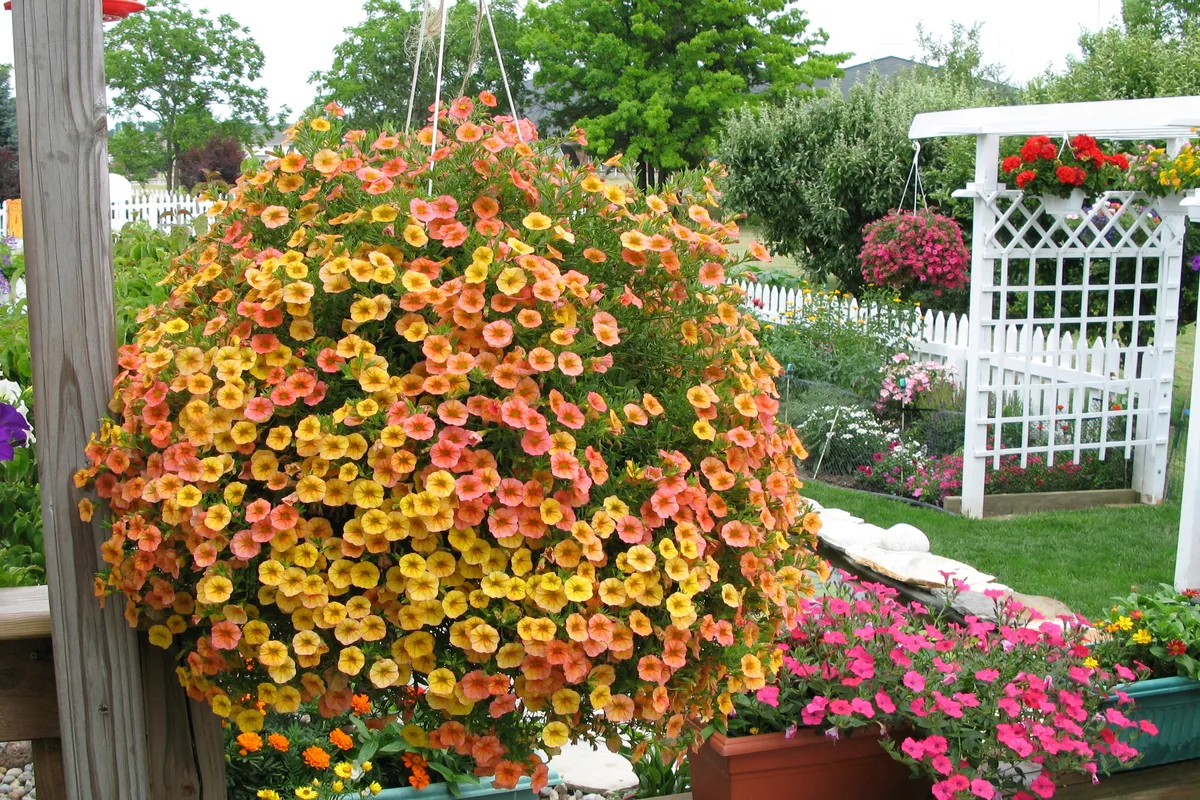
Alyssum is a low-maintenance plant that is easy to grow, even for beginners. It prefers full sun but can tolerate partial shade. Alyssum is well-suited for container gardening, as well as borders, rock gardens, and hanging baskets. It thrives in well-draining soil and requires regular watering to keep the soil moist.
Uses in the Garden
Alyssum is versatile and can be used in various ways in your garden. Due to its spreading nature, it works well as ground cover, filling in gaps between other plants and adding a touch of color. Alyssum also attracts pollinators like bees and butterflies, making it a beneficial addition to any pollinator garden.
Care and Maintenance
To keep your alyssum healthy and blooming, deadhead spent flowers regularly. This will encourage new growth and prolong the flowering season. Alyssum is generally resistant to pests and diseases, but it may be susceptible to root rot if the soil is overly wet. Be sure to provide adequate drainage to prevent this issue.
Summary
- Alyssum is a fragrant and charming annual flower.
- It emits a sweet scent that fills the air.
- The flowers come in various colors and create a carpet-like effect.
- Alyssum is easy to grow and can be used as ground cover or in containers.
- Regular deadheading and well-draining soil are essential for its care.
In conclusion, alyssum is a fantastic choice for adding fragrance and charm to your garden. Its easy care requirements and beautiful blooms make it an excellent addition to any landscape. Consider planting alyssum as ground cover or in containers to enjoy its delightful scent and colorful flowers.
Questions and Answers:
What are some annual flowers that bloom all year?
Some annual flowers that bloom all year are petunias, marigolds, impatiens, zinnias, begonias, and geraniums.
Can you recommend any annual flowers that are good for beginners?
Yes, some annual flowers that are good for beginners are marigolds, zinnias, and petunias. These flowers are relatively easy to grow and require minimal maintenance.
Are there any annual flowers that can withstand hot and dry conditions?
Yes, there are several annual flowers that can withstand hot and dry conditions. Some examples include portulaca, vinca, gazania, and lantana.
What are some annual flowers that have a strong fragrance?
Some annual flowers that have a strong fragrance are sweet peas, stocks, nicotiana, and heliotrope.
Can you suggest any annual flowers that attract butterflies and bees?
Sure, some annual flowers that attract butterflies and bees are cosmos, sunflowers, zinnias, and lantana. These flowers have bright colors and provide nectar for pollinators.
Are there any annual flowers that are resistant to pests and diseases?
Yes, there are several annual flowers that are resistant to pests and diseases. Some examples include marigolds, snapdragons, and geraniums. These flowers have natural compounds that repel pests.







